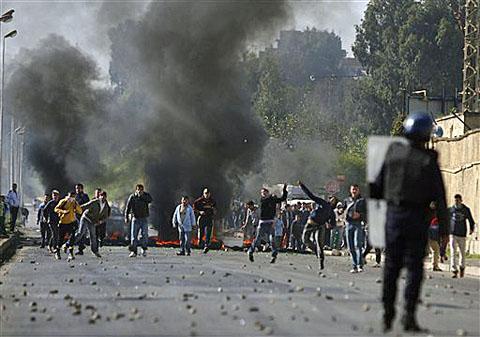“What are you so worried about?” goes the old comedy routine. “My future.” “What makes you so worried about your future?” “My past.” On this basis alone — what has happened in our world in the past few months — we should be very worried about our future. It does not matter if you are one of the 37 people remaining on the planet who do not “believe” in climate change, evolution or gravity (if you are in that select group, by the way, congratulations on your new Congressional committee chairmanship). If artillery shells are exploding in rapid succession, ever closer, you might want to take cover; we can discuss later whether you believe in high explosives.
For the moment let us focus on extreme weather events that are affecting the world’s food supplies and spiking food prices to levels that are destabilizing countries such as Tunisia and Egypt today and who knows whom tomorrow. According to the UN Food and Agriculture Organisation, world food prices hit a record high in January, for the seventh consecutive month. Its food price index was up 3.4% from December to the highest level since the organisation started measuring food prices in 1990.
It’s not just weather that’s doing this: but multiple, long-term threats to our food supply, such as those posed by soil erosion, overuse of chemicals and a looming shortage of petroleum, are being intensified and multiplied by ever larger and more frequent weather events. While soil depletion makes more topsoil available to erosion, heavier rains and higher winds take more of it away, faster. These weather events, involving either precipitation or the lack of precipitation, are taking place in the context of a climate that over time can only be characterized by summing up the nature of the weather events. So believe what you want to believe, but I believe we had better take cover.
Here are some — not all — of the weather explosions that have detonated in the past year:
- Pakistan, July 2010: A storm system described as “rogue,” of unusual intensity and hundreds of miles from the normal path of such storms, submerged 20% of the surface of Pakistan, killed 2,000 people and displaced some 20 million.
- Canada, summer 2010: Persistent heavy rains, while not causing the kind of flooding that makes headlines, prevented the planting and/or harvesting of much of the country’s grain crops.
- The Amazon, summer 2010: A drought parched the rain forest so badly that it killed masses of trees and stopped the absorbing carbon dioxide and began emitting it, thus morphing from a major antidote for greenhouse-gas emissions to a major polluter. The drought was as bad as the 2005 drought, which had been thought to be a one in 100-year event.
- China, August 2010: Massive floods kill 3,000 people and submerge . Russia, August 2010: Severe drought withered millions of acres of wheat before it could mature, and in the face of rising food prices the government stopped all exports of grain, removing about 17 per cent of world supply from the market.
- United States, February 2011: A monster winter storm, a low pressure system that for some time had its leading edge in Canada and its trailing edge in the Gulf of Mexico, with its cloud cover extending from the Rocky Mountains to the Atlantic Coast, hammered 30 states with severe winter weather. It was the third storm of similar proportions to strike this year, including one in October during which Minnesota recorded the lowest barometric pressure ever recorded in the interior United States. While no crops were directly affected, the spring runoff from the extraordinary snowfalls may flood croplands and delay seeding.
- China, February 2011: A U.N. food agency said Tuesday that China’s winter wheat harvest was at risk because of a drought that also has led to shortages of drinking water for people and livestock
- Australia, February 2011: One of the largest tropical cyclones (we call them hurricanes) ever to hit Australia smashed into the state of Queensland, which had been devastated by flooding in December. The region is a major producer of sugar cane, among other crops, and sugar prices have recently tripled.
- Africa, February 2011: The UN FAO warns that “floods and heavy rains have significantly damaged whole areas of agricultural land across southern Africa…the livelihood and food security of farmers and their families are at risk.” Countries affected include Botswana, Lesotho, Mozambique, Namibia, South Africa, Zambia and Zimbabwe. In addition, a combination of drought, failed harvests and the continued rise in global food prices has left at least 7 million people facing hunger in Ethiopia, Kenya, Somalia and Somaliland.
The forecasts, whether they come from meteorologists, climatologists, biologists or geopoliticians, are coming into alignment. The sky is darkening, the wind is rising, and as Bod Dylan used to warble, “It’s a hard rain gonna fall.”
